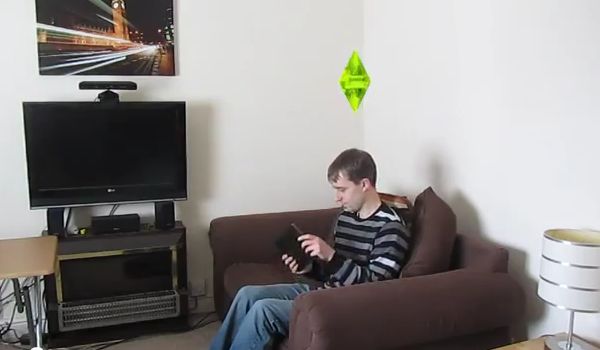
This handsome fellow on YouTube is a living person roleplaying a sim – because actual sims don’t have tablets yet. Millions of us use some form of datapad as a natural part of the day, but it is actually so recent that you don’t find them in computer games, nor in pretty much any novel that has reached print yet.
This entry is inspired by a question on Quora: “What technology trends will most dramatically change the world by 2015?”
My take on this is that 2015 is only three years away. Barring some “black swan”, some great and unforeseen event, technology has to already exist now to have much effect three years from now. It also need to either be extremely powerful or be easy to scale up / mass produce on a global level.
In light of this, my candidate is the Android tablet. Two things must go right, but seem likely to: 1) Android must not be forbidden on grounds of patents (as Apple, at the very least, would want); 2) Android must remain free, or nearly so. In this case, the free software combined with cheap mass produced hardware, will make relatively powerful tablets available to literally billions of people. Most of the tablets (and many of the people) will probably be made in China; this makes this prediction vulnerable to upheavals and war in that area. But then, most things by 2015 will be vulnerable to this.
The iPad has remained the tablet of choice since it first hit the market, but the success of the Kindle Fire shows that there is a large market among those who can’t justify the price of the iPad. There is an even larger market among those who can’t afford a Kindle Fire. The cheaper these things become, the larger the market. At the extreme, it is not unreasonable to expect a billion or two of them to be sold.
People my age and older tend to still think of the world as consisting mainly of a few rich countries and a sea of abject poverty covering the rest of the planet. This is no longer the case and hasn’t been for some time. There are a few rich countries and a few poor countries, and a large “middle class” of countries. Most of the world’s truly large countries fall in this middle range. And most of the people in them could potentially afford a cheap Android Tablet. Why would they, you may ask?
Because unlike mobile phones, tablets have a large space for pictures. Even if you are barely literate (or less than that), you can recognize the face of a friend or the logo of a company. Even for the fully literate, this may be faster. And for them, this is where things really take off. They can bring up lists of prices, quickly seeing where they can buy something cheaper or sell it for more. Weather forecasts can be seen at a glance and studied in detail. And tablets are great for reading books and magazines. The explosive growth of e-books in recent years is mostly due to tablets of various sorts: Back when you only had the PC and the mobile phone, the growth was much slower. Today, e-books sales overshadow all physical formats combined. Magazines are following suit.
With cloud computing and compression technologies (like the one now used in the Opera Mini browser, cutting up to 90% of the need for bandwidth), you won’t need high-speed networks for the tablets to be useful. Of course for the actual middle-class, the use for entertainment will drive the spread of faster networks and wireless access points branching off from fixed-line Internet. In addition to streaming movies and music, I expect an explosion of “hangouts”, the real-world answer to the picture telephone of science fiction.
There are good reasons why the picture telephone never became a success. Most people just don’t consider themselves that beautiful at all times, and have more faith in their ability to make their voice sound good in five seconds than their hair, makeup and jewelry. Rightly so, I dare say. However, the less improvised and very optional “hangout” (a function currently driving the spread of the Google+ social network) is another matter. It is something you join if you are motivated for it, usually as part of a group (although it is possible to have a 2-person hangout). While not everyone likes it, it is becoming more and more popular. When this function is fully implemented in cheap Android tablets, it will become an easy way for relatives to stay in touch after some of them have moved to the big city; it will let long-distance couples experience more intimacy than an ordinary phone; it may even be useful in business, as a quick teleconferencing or to show products. And it will be able to deliver on this in less than three years, I expect.
There are other technologies with far greater potential to transform society, especially in biotech and possibly nanotech. But they are unlikely to do so in three years. The Android tablet, on the other hand, has already started its victory march into the markets of what was once the “third world”. Why would they go through all the outdated technologies of the past, when they can leapfrog into the same future as we… only cheaper?
